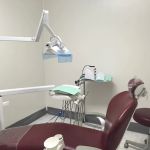- 1-Understanding-Post-Extraction-Toothache
- 2-Common-Causes-of-Tooth-Pain-After-Extraction
- 3-Dry-Socket-and-Its-Effects
- 4-Infection-After-Dental-Extraction
- 5-Nerve-Injury-and-Other-Less-Common-Causes
- 6-Managing-Toothache-and-When-to-See-a-Dentist
- 7-How-Dentistry-Toothtruth-Can-Help
1. Understanding Post-Extraction Toothache
Experiencing some level of discomfort or toothache after dental extraction is normal as your mouth begins the healing process. However, persistent or severe pain can indicate complications that need attention. Understanding the nature of pain after extraction helps patients manage expectations and recognize warning signs early.
After a tooth is removed, the empty socket undergoes tissue repair, which can cause inflammation and sensitivity. While mild pain usually subsides within a few days, several underlying causes might prolong or intensify the discomfort.
1.1 Typical Healing Timeline
The initial healing phase typically lasts 1 to 2 weeks, with pain gradually decreasing. Knowing this timeline helps differentiate normal recovery from problematic symptoms.
2. Common Causes of Tooth Pain After Extraction
The most frequent reasons for toothache after dental extraction include inflammation, infection, and trauma to surrounding tissues. Inflammation is part of the body’s natural response to injury and contributes to swelling and tenderness around the extraction site.
Infections can develop if bacteria enter the open socket, leading to increased pain, swelling, and sometimes fever. Trauma may occur if nearby nerves or tissues are irritated during the extraction procedure.
2.1 The Role of Postoperative Care
Proper postoperative care, including avoiding smoking, following cleaning instructions, and taking prescribed medications, greatly reduces risks and supports smoother recovery.
3. Dry Socket and Its Effects
Dry socket, or alveolar osteitis, is a painful condition that occurs when the blood clot protecting the extraction site dislodges prematurely. Without this clot, the underlying bone and nerves are exposed, causing intense pain that often radiates to the ear or jaw.
Dry socket typically develops 3 to 5 days after extraction and requires prompt dental intervention to relieve pain and promote healing.
3.1 Symptoms and Risk Factors
Patients experiencing severe pain, bad taste, or visible bone in the socket should seek immediate care. Smoking, poor oral hygiene, and traumatic extractions increase the risk.
4. Infection After Dental Extraction
Infections manifest as persistent pain, swelling, redness, and sometimes pus discharge. If untreated, infections can spread, causing systemic symptoms like fever and swollen lymph nodes.
Antibiotics and professional cleaning are usually necessary to manage infections effectively.
4.1 Preventing Post-Extraction Infection
Maintaining oral hygiene and following all post-extraction instructions minimizes infection risks significantly.
5. Nerve Injury and Other Less Common Causes
Though rare, nerve injury during extraction can cause prolonged numbness or sharp pain. Other causes include sinus exposure (in upper molar extractions) or referred pain from other dental issues.
Early diagnosis and treatment improve outcomes in such cases.
5.1 When to Consult Your Dentist
If pain intensifies or lasts beyond two weeks, or if you experience unusual symptoms like numbness, immediate dental consultation is critical.
6. Managing Toothache and When to See a Dentist
Over-the-counter pain relievers, cold compresses, and saltwater rinses can help alleviate mild to moderate post-extraction pain. Avoiding hard foods and practicing gentle oral hygiene promote healing.
Persistent or worsening pain should prompt an appointment with your dentist to rule out complications.
6.1 Signs That Require Urgent Care
Severe pain, swelling spreading to the face or neck, difficulty breathing or swallowing, and fever are red flags needing immediate attention.
7. How Dentistry Toothtruth Can Help
Dentistry Toothtruth specializes in expert post-extraction care and pain management. Our experienced team provides thorough evaluations, diagnoses complications early, and offers personalized treatment plans to ensure your comfort and speedy recovery.
With Dentistry Toothtruth, you gain access to trusted professionals dedicated to guiding you through every step of the healing process with compassion and expertise.
Understanding the causes of toothache after dental extraction empowers you to take proactive steps in your recovery. By recognizing symptoms early and maintaining good oral care, you can minimize discomfort and protect your oral health effectively.







 Evans Orthodontics4.0 (293 review)
Evans Orthodontics4.0 (293 review) Dr. Yun J. Choi, DMD3.0 (10 review)
Dr. Yun J. Choi, DMD3.0 (10 review) Anoka Ramsey Dental5.0 (185 review)
Anoka Ramsey Dental5.0 (185 review) Gentle Dental Moreno Valley4.0 (147 review)
Gentle Dental Moreno Valley4.0 (147 review) Dr. Peter Murchie5.0 (1 review)
Dr. Peter Murchie5.0 (1 review) Ana C Melnyk Dentistry: Melnyk Ana C DDS4.0 (25 review)
Ana C Melnyk Dentistry: Melnyk Ana C DDS4.0 (25 review) The Importance of Oral Health Education During Pregnancy for a Healthy Pregnancy
The Importance of Oral Health Education During Pregnancy for a Healthy Pregnancy Best Tips for Brushing Your Teeth Properly for Healthy Gums: Essential Techniques for Oral Health
Best Tips for Brushing Your Teeth Properly for Healthy Gums: Essential Techniques for Oral Health Why Skipping Dental Checkups Can Lead to Bigger Oral Health Problems
Why Skipping Dental Checkups Can Lead to Bigger Oral Health Problems Advantages of Porcelain Dental Restorations
Advantages of Porcelain Dental Restorations How Can Diabetes Cause Tooth and Gum Problems? Preventing and Managing Oral Health Issues
How Can Diabetes Cause Tooth and Gum Problems? Preventing and Managing Oral Health Issues Healthy Habits for Promoting Good Oral Health and Hygiene: Tips for a Healthy Smile
Healthy Habits for Promoting Good Oral Health and Hygiene: Tips for a Healthy Smile